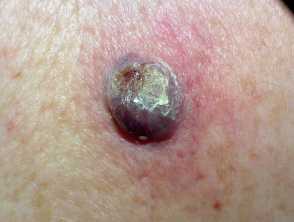MedicalResearch.com Interview with:
Pei Wang, PhD
Professor, Department of Genetics and Genomic Sciences
Icahn School of Medicine at Mount Sinai, New York, NY 10029, USA
Michael J. Birrer MD PhD
Director, Winthrop P. Rockefeller Cancer Institute
University of Arkansas for Medical Sciences
Little Rock, AR 72205
Amanda G. Paulovich MD PhD
Translational Science and Therapeutics Division
Fred Hutchinson Cancer Center
Seattle WA 98109
MedicalResearch.com: What is the background for this study? How common is serous ovarian cancer?
Response: Epithelial ovarian cancer accounts for >185,000 deaths/year worldwide. The most common subtype, high-grade serous ovarian cancer (HGSOC), accounts for 60% of deaths. Despite improvements in surgical and chemotherapeutic approaches, HGSOC mortality has not changed in decades. Five-year survival remains ~30% for the majority of patients.
Standard of care involves surgical debulking combined with adjuvant or neoadjuvant chemotherapy with carbo- or cisplatin in combination with a taxane. At diagnosis, HGSOC is among the most chemo-sensitive of all epithelial malignancies, with initial response rates of ~85%, presumably related to DNA repair defects. Platinum is thought primarily to drive the response rate, due to the lower single-agent response rate for taxanes.
Unfortunately, 10-20% of HGSOC patients have treatment-refractory disease at diagnosis, fail to respond to initial chemotherapy, and have a dismal prognosis. The poor response to subsequent therapy and median overall survival of ~12 months for these patients has not changed in 40 years.
Despite >30 years of literature studying platinum resistance in cancer, there currently is no way to distinguish refractory from sensitive HGSOCs prior to therapy. Consequently, patients with refractory disease experience the toxicity of platinum-based chemotherapy without benefit. Due to their rapid progression, they are commonly excluded from participating in clinical trials. Consequently, there is no ongoing clinical research that could identify effective therapeutic agents for these patients or provide insights into molecular mechanisms of refractory disease. “Right now, we can’t identify drug-resistant ovarian cancer patients up front,” said co-senior author
Michael Birrer, MD, PhD, who directs UAMS’ Winthrop J. Rockefeller Cancer Institute. “We find them by default: They get sick and pass away so quickly that they can’t even be put on new clinical trials.”
To address this unmet clinical need, we performed proteogenomic analysis of treatment-naïve HGSOCs (chemo-sensitive and chemo-refractory) to identify molecular signatures of refractory HGSOC and to identify potential treatment targets.
(more…)


















 Response: We were broadly interested in discovering instances of bacterial genes that have been acquired by diverse animal genomes over millions of years of evolution by the process of horizontal gene transfer (HGT). Since these events are quite rare and most previous discoveries have been serendipitous, we developed computational methods to identify genes acquired by HGT in animals. One of the exciting discoveries from our work was that vertebrate IRBP appeared to have originated in bacteria and is now a critical component of the vertebrate visual cycle, so this paper focuses on that one discovery.
IRBP or interphotoreceptor retinoid binding protein is an important protein present in the space between two major cell types in our eyes, photoreceptor cells and RPE cells. Our ability to see involves an intricate set of steps where light is first sensed by causing a change (isomerization) in the chemical structure of molecules in the eye called retinoids. This sensing of light occurs in our photoreceptor cells. Following this change in the chemical structure, the retinoid needs to be recycled back to the chemical structure that can again sense light. This recycling occurs in RPE cells. IRBP performs the essential function of shuttling retinoids between the photoreceptors and the RPE cells, which allows the cycle of sensing and regeneration to work. Supporting its importance, mutations in IRBP (also known as retinol binding protein 3 or RBP3) can cause several severe human eye diseases.
Response: We were broadly interested in discovering instances of bacterial genes that have been acquired by diverse animal genomes over millions of years of evolution by the process of horizontal gene transfer (HGT). Since these events are quite rare and most previous discoveries have been serendipitous, we developed computational methods to identify genes acquired by HGT in animals. One of the exciting discoveries from our work was that vertebrate IRBP appeared to have originated in bacteria and is now a critical component of the vertebrate visual cycle, so this paper focuses on that one discovery.
IRBP or interphotoreceptor retinoid binding protein is an important protein present in the space between two major cell types in our eyes, photoreceptor cells and RPE cells. Our ability to see involves an intricate set of steps where light is first sensed by causing a change (isomerization) in the chemical structure of molecules in the eye called retinoids. This sensing of light occurs in our photoreceptor cells. Following this change in the chemical structure, the retinoid needs to be recycled back to the chemical structure that can again sense light. This recycling occurs in RPE cells. IRBP performs the essential function of shuttling retinoids between the photoreceptors and the RPE cells, which allows the cycle of sensing and regeneration to work. Supporting its importance, mutations in IRBP (also known as retinol binding protein 3 or RBP3) can cause several severe human eye diseases.












